Incomplete infrastructure, overloaded vehicle inspection, high traffic accidents, and inadequate driver testing are four challenges facing the transportation industry today.
Infrastructure construction capital does not meet demand
In recent years, thanks to investment in renovation and construction of many new projects, Vietnam's transport infrastructure has changed significantly, meeting the needs of the people.
The country has 29 expressways with a total length of 1,729 km, of which 566 km have been completed in the past three years, equal to half of the volume deployed in the previous 20 years, contributing to increasing transport capacity on important economic corridors. The transport sector is also implementing construction of about 1,071 km; urgently completing procedures to start construction of the 4th ring road of the Hanoi capital region and the 3rd ring road of Ho Chi Minh City.
The railway, aviation and maritime sectors all have renovation and upgrading projects such as the renovation of the Hanoi - Ho Chi Minh City railway line, shortening train travel time, upgrading the runways at Noi Bai and Tan Son Nhat. Seaports basically meet the transport capacity and export and import of goods nationwide.
However, the transport infrastructure has not yet met the needs of the country's socio-economic development, and the regions have not been synchronized. In the past, the Mekong Delta region has not received many investments in expressway projects. In addition, investment procedures are still complicated and lengthy, capital sources have not met the needs, and socialization of investment in transport infrastructure is still limited.
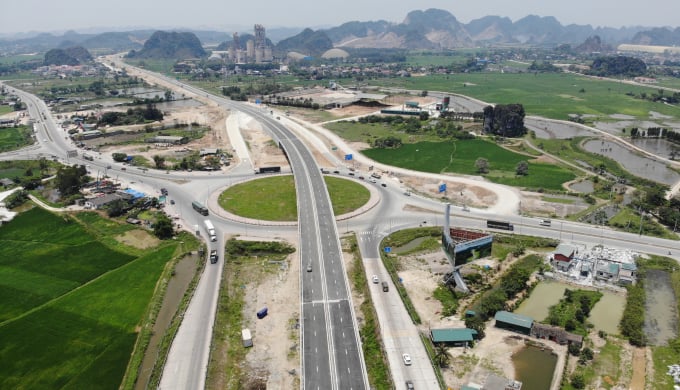
Mai Son Expressway - National Highway 45. Photo: Le Hoang
The goal is to have about 3,000 km of the North-South expressway in the east by 2025. By 2030, the country will have about 5,000 km; complete the coastal route of over 1,700 km from Quang Ninh to Ca Mau ; build Long Thanh international airport (phase 1) and expand Noi Bai international airport, invest in the North-South high-speed railway.
The Ministry of Transport has gradually synchronized and modernized solutions for developing transport infrastructure; allocated capital reasonably among regions and focused and key investments. The Ministry has also mobilized domestic and foreign resources to participate in investing in developing transport infrastructure, promoting decentralization and investment delegation to localities.
Overload in motor vehicle inspection
From October 2022 to May, the police searched and prosecuted and detained nearly 600 leaders, inspectors and employees of inspection centers, forcing 106 out of 281 (38%) inspection units to stop operations to serve the investigation.
The suspension of centers and the shortage of inspectors have led to congestion of vehicles, causing a crisis for the entire inspection industry. Currently, there are 32 units nationwide that are not yet qualified to resume operations. In Hanoi, 26/31 units are currently operating, meeting only 51% of inspection needs, and in Ho Chi Minh City, 16/19 units are operating, meeting 52% of the needs of people and businesses.
The Ministry of Transport has requested inspection centers to work overtime, including Saturdays, Sundays, and holidays; advised people to proactively maintain and repair their vehicles before registering for inspection; and applied software for people and businesses to register for inspection schedules. Localities also ensure security, order, and safety for people and vehicles, and prevent individuals from taking advantage of the high demand for inspection to profit and disrupt public order.
The Ministry of Transport has drafted a Decree amending and supplementing a number of articles of Decree 139/2018 regulating the business of motor vehicle inspection services, which has decentralized state management to localities, allowing genuine warranty and maintenance facilities of automobile manufacturers, assemblers and importers to provide inspection services. This regulation, when applied, will increase the number of inspection units, reducing the burden on current centers.
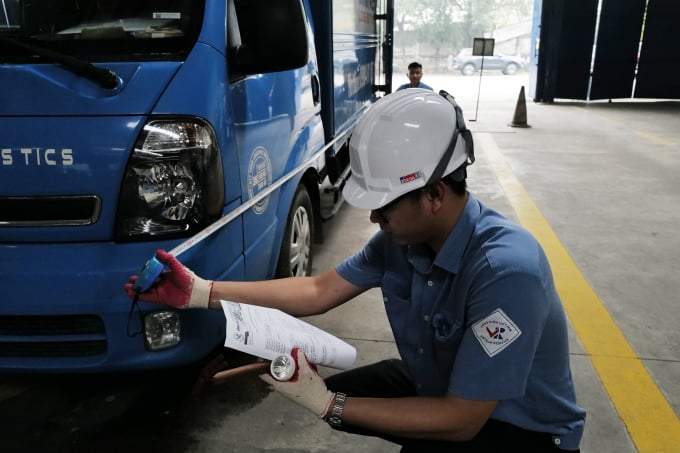
Vehicle inspection in Hanoi. Photo: Ngoc Thanh
At the same time, the Ministry has amended and supplemented Circular No. 16/2021 to allow automatic extension of the inspection cycle for passenger cars with up to 9 seats that are not used for transportation business. Accordingly, vehicle owners do not have to bring their vehicles to the center for re-inspection, which will solve the problem of congestion of vehicles being inspected in the coming months.
Along with that, the inspection industry will complete the inspection management software, ensuring high security, synchronized online from the centers to the data management system of the Vietnam Register, ensuring publicity, preventing external intervention to distort records and inspection results.
Violations in driver training and testing
In early 2023, the Ministry of Transport established inspection teams to comprehensively inspect the training, testing, and licensing of drivers at the Departments of Transport nationwide.
The inspection team discovered problems in the management of the transport departments, with potential negative risks such as limited exploitation of DAT data (monitoring study time and distance) for training management, failure to check and monitor courses and certification exams; and approval of candidates who meet the conditions to take the exam without fully comparing the data.
Along with that, the delegation also discovered the phenomenon of candidates communicating with each other, examiners communicating with candidates in many localities. The Inspectorate of the Ministry of Transport has transferred information about many driving training facilities suspected of negative signs to local police agencies for verification and clarification.
The Ministry of Transport said it will review legal documents, standards, and regulations on training, testing, and granting of driving licenses to detect any content that is no longer appropriate. At the same time, the Ministry will rectify and improve the quality of training and testing for driving licenses; review standards and conditions on facilities for driving training facilities; have a strict control mechanism to end the situation of granting driving licenses to drug addicts and people who lack capacity, behavior, or health.
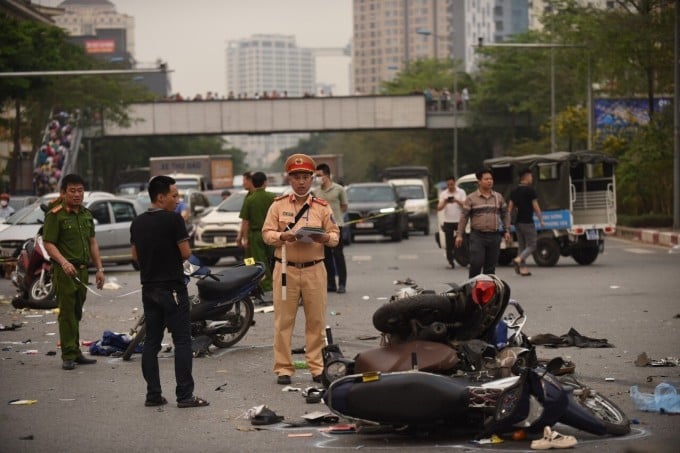
Traffic accident on Vo Chi Cong Street, April 2023. Photo: Pham Chieu
Traffic accidents remain high
Since 2011, traffic safety has decreased in all three indicators including the number of cases, the number of deaths and the number of injuries. In 2011, the number of deaths due to traffic accidents was 11,400 people, but by 2020 it had decreased to 6,700 people. While the number of motor vehicles increased from 35.8 million to 72 million, the population increased from 87 million (in 2010) to 97 million (in 2020).
However, the number of cases, deaths and injuries due to traffic accidents remains high, with many serious accidents involving commercial transport vehicles. Overloaded vehicles are running through many provinces without being detected or handled, and the phenomenon of expanding the sides and cargo areas of vehicles shows signs of recurring in some localities.
People violating and disregarding the law when participating in traffic is still common. From 2009 to January 2023, the authorities have handled nearly 66 million violations, including some violations with high risks leading to traffic accidents such as alcohol concentration violations (more than 1.39 million cases) and drug use with more than 6,000 cases.
The Ministry of Transport has proposed solutions such as ensuring progress and quality, early putting into operation key transport infrastructure projects and expressways; continuing to handle black spots, adjusting traffic organization and signaling systems to ensure safety conditions to reduce traffic accidents.
The Ministry will also improve the technical safety and environmental protection of vehicles, and perfect technical standards and regulations for vehicles.
The question-and-answer session at the National Assembly will begin on the morning of June 6, lasting 2.5 days with four groups of issues. The fourth group of issues will be answered by Minister of Transport Nguyen Van Thang, including solutions to improve the transport infrastructure system, limit accidents, reduce congestion in big cities; inspection activities, remove difficulties, and improve the quality of inspection of road and inland waterway vehicles.
Mr. Thang also answered questions about transport management, vehicle quality; training, testing, granting, revoking and managing licenses to operate road and inland waterway vehicles.
Deputy Prime Minister Tran Hong Ha; Ministers of Planning and Investment, Finance, Construction, Science and Technology, Public Security, and National Defense participated in answering questions.
Source link


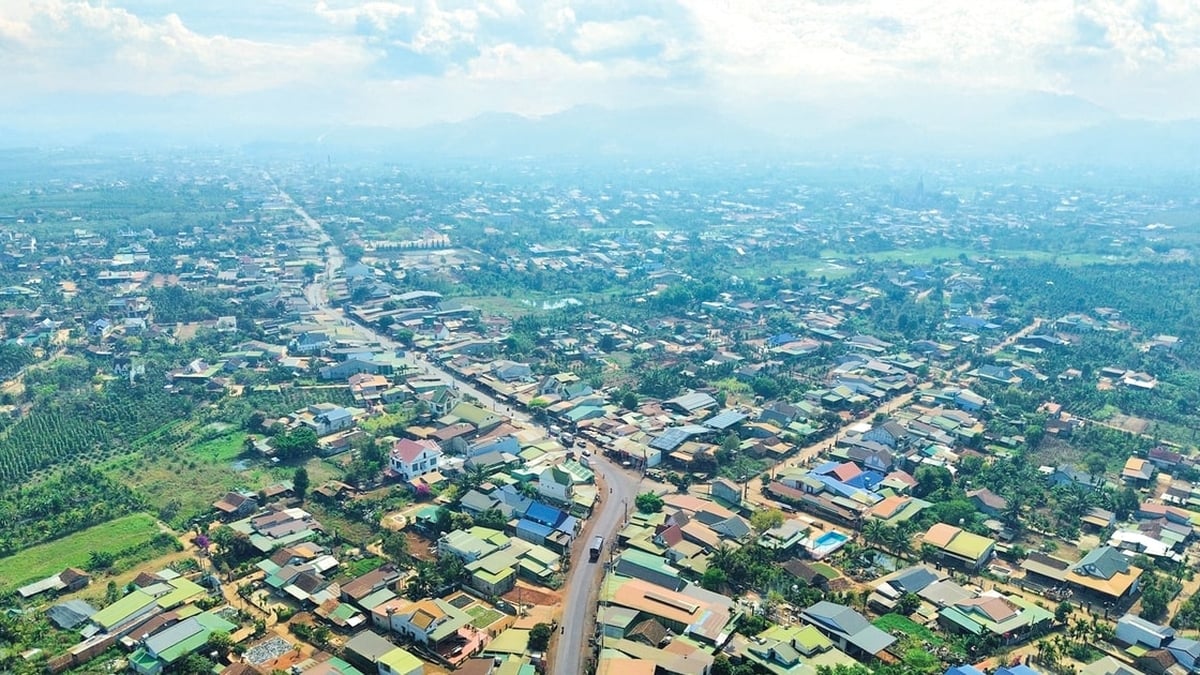


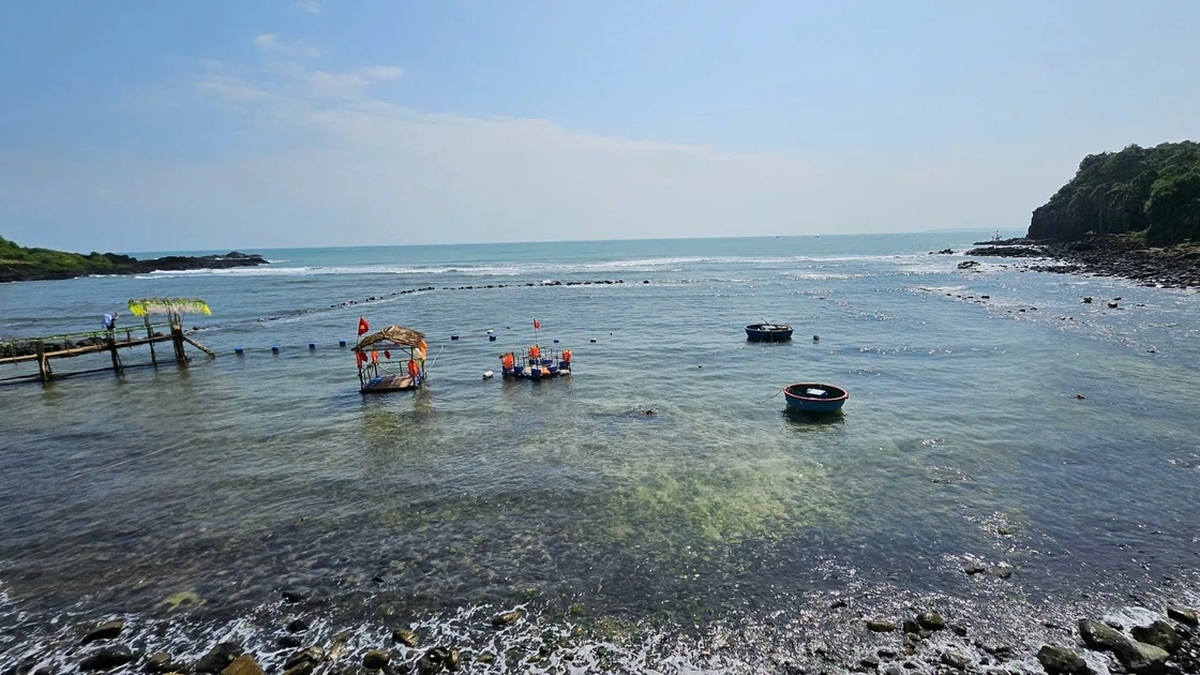





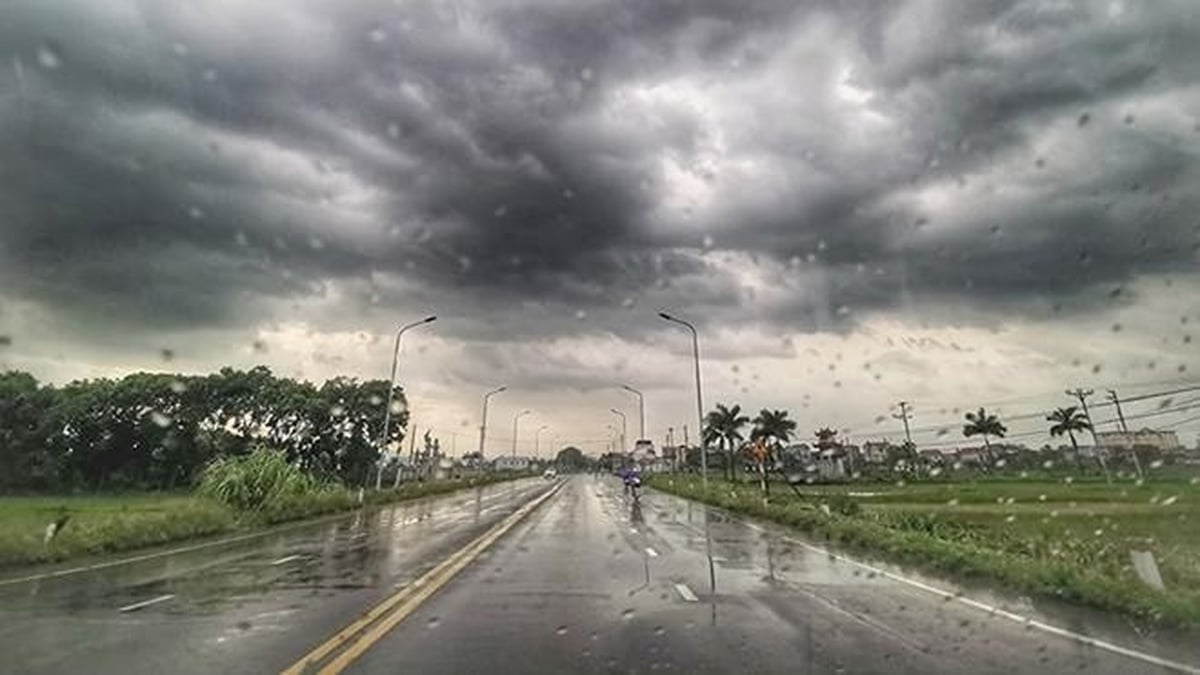






















































































Comment (0)